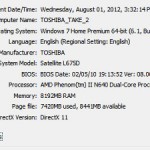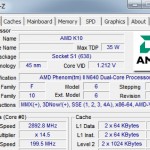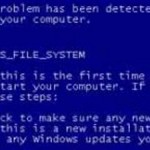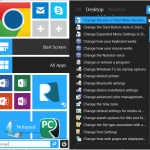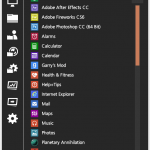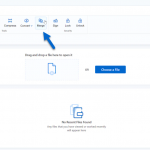Nedávno jsem měl příležitost upgradovat většinu svého stolního počítače. To byl spuštěn strašně. Dokonce i základní prohlížení webových stránek se celou věčnost, nevadí, hry, grafické aplikace, nebo vůbec nic.
| Podle Steve Horton |
|
|
| Podle Steve Horton |
|
|
Normálně, 32-bit Windows může vidět pouze cca 3,5 GB RAM. Nicméně, tam je způsob, jak přistupovat zbytek paměti. Zde je návod, jak to udělat.
| Podle Steve Horton |
|
|
Multimediální na vašem počítači se systémem Windows je řešen pomocí sady rozhraní s názvem DirectX. Zde je to, co všechno to znamená a jak to souvisí s počítači a Windows 8.
| Podle Steve Horton |
|
|
Je důležité znát rozdíly mezi třemi hlavními verzemi systému Windows 8, takže si můžete být informováni, když jdete na to koupit.
| Podle Steve Horton |
|
|
Někdy se váš počítač bude aktualizovat přes noc a restartujte počítač, můžete ztratit vaše soubory. Zde je návod, jak zakázat automatický restart.
| Podle Steve Horton |
|
|
Bezdrátové internetové připojení občas potřebuje vypnout úplně. Zde je návod, jak vypnout Wi-Fi připojení k internetu v systému Windows.
| Podle Steve Horton |
|
|
Máme 12 dobrých důvodů, proč byste měli upgradovat na Windows 8, pokud jde o prodeje v říjnu 2012.
| Podle Steve Horton |
|
|
Ne každý počítač lze spustit Windows 8. Zde jsou některé dobré způsoby, jak otestovat, zda je váš počítač připraven na upgrade, nebo pokud byste měli držet s operačním systémem, který máte.
| Podle Steve Horton |
|
|
Windows Vista a Windows 7 představil novou skóre vestavěný do Windows, s názvem Index uživatelských zkušeností se systémem Windows.
| Podle Steve Horton |
|
|
Kdykoliv máte problém s počítačem, spouštění v nouzovém režimu, chráněné verzi systému Windows, bude často stabilizovat jej a nechte jej opravit problém.

| Podle Steve Horton |
|
|
BIOS je malý programovatelný oblast vašeho počítače. Jsou chvíle, kdy budete potřebovat, aby se tam dostat upravit nastavení, a tady je návod, jak to udělat.
| Podle Steve Horton |
|
|
PCWorld má ohromný přehled Řidič reviver, udělal jejich recenzenta, Liane Cassavoy. Podívejte se na to.
| Podle Steve Horton |
|
|
NTFS_FILE_SYSTEM je modrá obrazovka smrti chyb, která je způsobena selhání pevného disku. Budeš muset obnovit ze zálohy.
